SOCIAL ACTIVITES
Top-Rated Attractions in Alexandria
Alexander the Great founded it. Queen Cleopatra lorded over it. Alexandria’s birth and early history is a calling card of famous names. This was the Mediterranean’s dazzling jewel of a city, home to the Great Library of Alexandria and the colossal Pharos Lighthouse – one of the seven wonders of the ancient world.
1. Museums of the Bibliotheca Alexandrina

Most visitors to Alexandria beeline first to this modern re-imagining of Alexandria’s ancient Great Library. It contains one of the modern world’s most ambitious libraries and a host of museums exploring Alexandria’s history and heritage. Its architecture is centered around a giant sun disk, which presides over the waterfront Corniche. Inside, the huge main library and its reading room can hold eight million volumes.
2. Stroll the Corniche
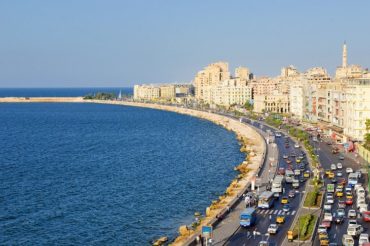
Downtown Alexandria’s wide, waterfront Corniche Road is as much a symbol of the city as any of its monuments. Strolling the Corniche, particularly the section between the main shorefront square of Midan Saad Zaghloul to Fort Qaitbey on the Eastern Harbor’s western tip, gives you a real feel for the era of cosmopolitan elegance and decadence that marked this city in the late 19th and early 20th centuries.
3. Head Underground at the Catacombs of Kom el-Shuqqafa
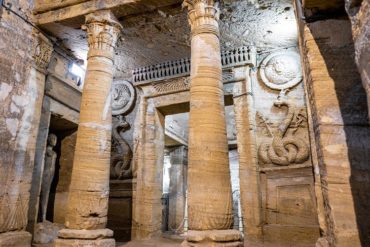
The Catacombs of Kom el-Shuqqafa are hewn from the rock on the southern slopes of a hill, in the Carmous district. Thought to date from the 2nd century CE, they offer an admirable example of the characteristic Alexandrian fusion of Egyptian and Greco-Roman styles. Discovered in 1900 (thanks to a donkey falling into them) they are laid out on several levels of sarcophagi and loculi (shelf tomb) chambers.
4. Fort Qaitbey
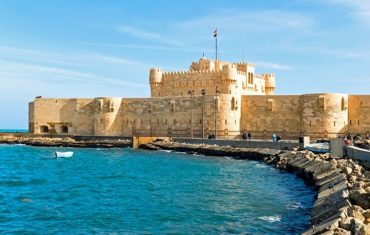
Walk the long shorefront Corniche road of the Eastern Harbor heading west, and you’ll finally arrive at Fort Qaitbey. It may be a poor substitute for what was once the site of the mighty Pharos Lighthouse–one of the seven wonders of the ancient world, which was toppled by a violent earthquake in 1303–but this squat fort has been standing guard over Alexandria since 1480.
5. Kom el-Dikka
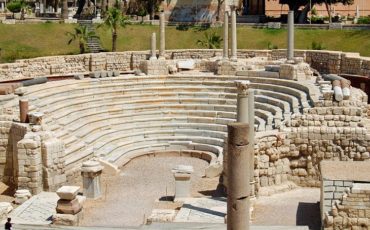
Nobody thought much of the ancient rubble mound in central Alexandria until, in the 1960s, they decided to clear the site to make way for new housing. As work commenced, the area known as Kom el-Dikka (“Mound of Rubble”) revealed a whole swag of ancient ruins buried beneath, including a small Roman theater.
6. Pompey’s Pillar
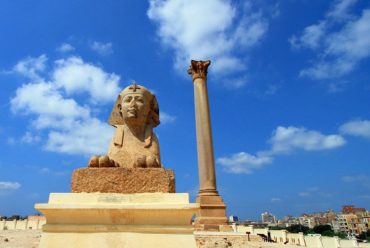
In Carmous, near the Catacombs of Kom el-Shuqqafa, is a hill littered with the remains of ancient walls, architectural fragments, and rubble on which Alexandria’s only fully intact ancient monument is left standing. Pompey’s Pillar rises from the ruins of the ancient and famous Serapeion (Temple of Serapis), which was once used to store the overflow of manuscripts from the Great Library of Alexandria.
7. Alexandria National Museum
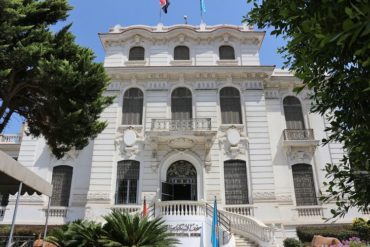
Alexandria’s National Museum is a must-stop if you want to get to grips with the vast history of this famed city. Inside, the collection guides you from the Pharaonic era (in the basement), to the Hellenistic heyday, when Alexandria and Egypt were governed by the Ptolemy dynasty begun by Alexander the Great (on the ground floor), and up to the Byzantine and Islamic periods (on the 1st floor).
8. Montazah Gardens
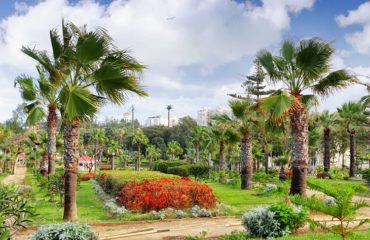
An oasis of calm on the city’s eastern edge, Montazah is a lush haven of tall palm trees, trimmed lawns, and blossoming flowers that was once off-limits to all but the royal court and their hangers-on. Built as a hunting lodge in the 1890s by Khedive Abbas Hilmi, it was later extended substantially by King Fuad and replaced Ras el-Tin Palace as the royal family’s summer house.
9. Dine Out in Alexandria’s Fish Restaurants
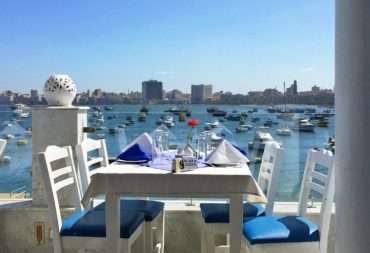
Many visitors come to Alexandria primely to dine on the city’s fresh seafood. The two best areas for restaurants serving fresh fish are the harborfront, where you get sea views with your meal, and the working-class district of Anfushi, which stretches west from Fort Qaitbey and the harbor in a warren of lanes.
10. Ras el-Tin Palace
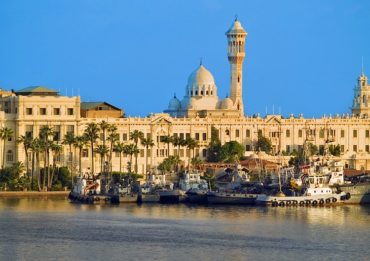
Sumptuous Ras el-Tin Palace was once a summer escape for Egypt’s sultans when the desert heat of Cairo got too much to bear. It’s also the famed location where King Farouk–Egypt’s last king–officially abdicated in 1952 before sailing out of Alexandria’s harbor and into exile in Italy.

